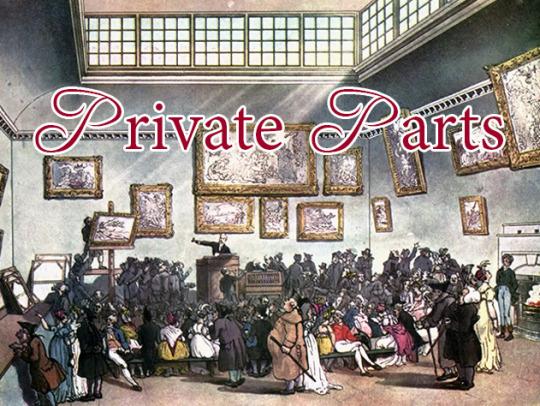
Private Parts is a series exposing the raw, gritty, and true stories behind artworks in private collections. Every week, you’ll find the untold tales of the back stabbings, thefts, and $100 million deals that move these works to secret lairs and impregnable vaults around the world. We’ll always be crazy in love with museums and galleries, but we also believe in giving the people what they want: All the art.
This week, behold The Portrait of Jan Six by Rembrandt van Rijn.

SOURCEHe could teach you, but he’d have to charge.
Jan Six was a prolific, if inadvertently controversial art collector and political powerbroker in 17th century Amsterdam. He and Rembrandt shared major bro love, remaining BFFs for most of their lives. The painter performed additional duties as portrait maker and art dealer to the dude with the freshest ‘do in all the Low Countries. For real, just bask in the lovely locks that just flow from Six’s noodle.
The Sixes were unlikely candidates to become one of the most important families in Amsterdam. Jan’s mother and father were protestants who uprooted the fam to the Netherlands from France in the name of religious freedom. Lucky for them, one of the things they brought from France was a knack for getting things to people in a hurry. This very particular skillset was leveraged in Amsterdam into a burgeoning shipping empire specializing in silks and indigo dye.
Jan’s father died shortly after the move, and his mother took over the family’s throne. Instead of resting on those shipping laurels, she went mogul and invested every spare penny in enough Amsterdam real estate to keep the family flush to this day. She could ball, and passed that skillset on to her spawn.

Jan Six gave up on a position in the family business early because… well, he didn’t need to work. His older brother took over the big picture business stuff and Jan settled into a life of finding what kind of artistic pursuit tickled his pickle. Poetry was fun, and music was certainly fine, too. But art, for Jan, was what mattered.
By no small coincidence, he married the daughter of Dr. Nicolaes Tulp: One of Amsterdam’s favorite sons, art collecting extraordinaire, and the subject of one of Rembrandt’s most famous paintings. The marriage brought the Tulps some prestige and it brought Jan’s art game from amatuer to pro status. Who needs true love when a marriage is a strategic win-win?

When Jan was shopping around for a painter to portrait-ize his bad self, Rembrandt took the job. Neither knew exactly how the portrait should come out, so there’s more than a half-dozen preparations and false starts. But the one we’re looking at blows them all out of the water.
The Six family has hung the portrait in the living area of their 58 room mansion for a solid majority of the last 300 years. New York art dealer Otto Naumann believes it would fetch $150 million on the auction block, but that won’t happen for the foreseeable future. The Sixes have a controversial, century-old ‘understanding’ with the Dutch government for tax breaks if the family keeps the collection intact (portrait of Jan included) and the whole kit and caboodle remains in the country.

Back in 1901, Jan Six VII got hit up by the government for a ton of taxes after his father Jan Six VI died (you’re going to notice an annoying naming convention for the eldest male heirs to the Six family fortune). Just like it would be in America, the value of the art was taxed upon being inherited.
With hundreds of masterpieces in the collection, that tally added up quick. So quick that masterpieces by Frans Hals and Michelangelo were sold off to save other masterpieces of equal magnificence. Hence, the government’s action to make a devil’s bargain to trade unknowable future tax earnings for keeping one of the best collections of European art in their borders.
So, now, part of the Six family’s 58 room mansion on the Amstel River is a “museum.” But it’s not like you can walk up and knock on the door to see their treasures. The Six family not only caps the number of visitors allowed into their federally subsidized abode, but they’re only open for a couple hours a day. The government’s taken current patriarch Jan Six X to court a few times to open up the collection’s availability to the public. And, sure, the museum’s gone from being ‘by invitation’ only to allowing in 5000 people per year. Although, it’s only recently that the Six family agreed to let their collection be advertised to the public as something to come and look at.

PICTURED: The motto of the Jan family museum’s visitor’s center from 1901 until, basically, yesterday.
The truth is, even if you went there today, it’s only 50/50 whether you’d see Portrait of Jan Six, the collection’s crown jewel. The Foundation keeps it in storage pretty often, and refuses invitations to send it off to museums anywhere outside the Netherlands. X’s son Jan Six XI pledges all that will change, but it’s still just a promise with an unknown outcome.
For now, art lovers and Rembrandt fans, i.e. people with a beating heart, are subject to the decisions of Six X. The guy who publicly describes the majority of museums as stylish hospitals with better wall decorations #SartleBOOOO.

By Clayton
Sources
- http://www.vlinder-01.dds.nl/cdr/paintings/rembrandt.htm
- http://www.theartwolf.com/articles/most-valuable-private-art.htm
- http://www.foxnews.com/world/2010/09/27/rembrandts-jan-years-watching-f…
- http://www.artnews.com/2003/11/01/the-most-wanted-works-of-art/
- http://www.wmagazine.com/culture/art-and-design/2007/12/jan_six_art/
- http://www.codart.com/news/755/
- http://artdaily.com/news/40618/Jan-Six-Portrait-by-Rembrandt-on-Display…
- http://arthistory.about.com/od/from_exhibitions/ig/dutchportraitsngl/dp…
- http://www.nytimes.com/1987/10/18/travel/rembrandts-by-invitation-only…
- http://www.wga.hu/html_m/r/rembrand/24portra/093portr.html
Comments (2)

Jan Six put up an early career in the family business because he didn't feel the need to support himself financially










This is a great painting, hope it enters a public colletion one day.